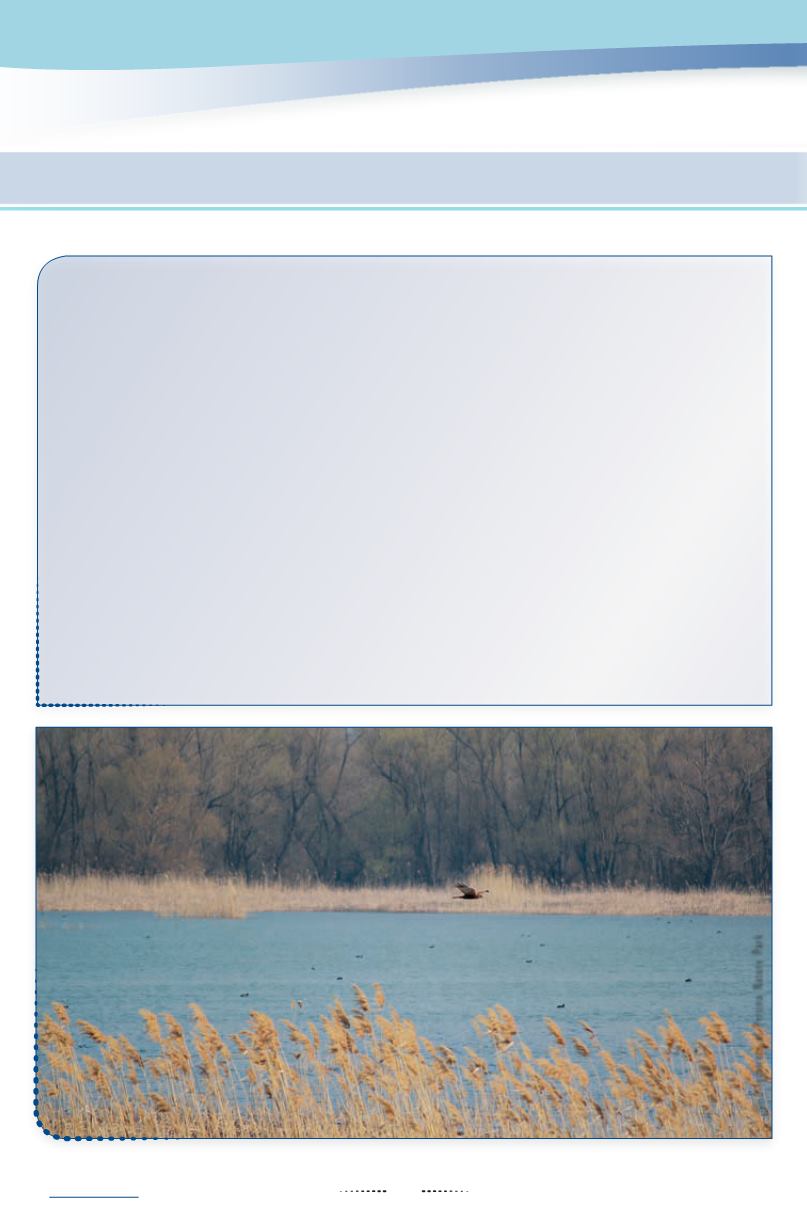
86
M
ain
impactsandbenefits
The high river flow of the lower Danube makes it difficult to assess the relative impact of the NWRM due to the scale.
It is however proven that the project has played a significant role in
re-connecting
former wetlands, with 80% of the
water regime having been restored. The measure also impacts the overall water quality through
nutrient reduction and
capture
(Nitrate, Phosphorous) and by capturing organic pollutants. Improved self-purification and nutrient capture capacity
of the river system contributes to mitigating the impacts of untreated urban waste waters (responding to UWWT Directive
requirements) and has a direct contribution to the implementation of the Bird and Habitat Directives. Regarding ecological
status, the project showed positive impacts on
morphological parameters
(connectivity) as well as an expected positive
impact on Biological Quality Elements – fish fauna. It contributes to the conservation objectives of water-dependent protected
areas. It is expected to take 10 to 15 years for the restored wetlands to reach the desired ecosystem value. The river runoff
reduced by 1 to 10%, which contributes to controlling runoff, but no published data or estimation exists on peak flow rate
reduction: taking into account the total runoff of the Danube River in peak flow, the overall impact on flood reduction for
the Danube is limited, although nevertheless contributes an incremental improvement.
Other benefits also resulted from application of the measure.
Biodiversity
has improved, with the number of birds of 22
species increasing and fish species increasing from 2 to 10 within two months of the first test flooding of Belene Island.
Moreover, the wetland sites offer a chance for future
tourism
development in the region, new employment opportunities
and economic benefits due to
fishery and biomass
production. As an example, the project supported initiatives such as
manufacturing charcoal briquettes from reeds harvested from the restored wetlands. Improved farming techniques and the
development of organic certified crops created potential for increased value of agricultural products and revenue for farmers.
Finally, the Danube wetland restoration introduced a new idea that wetlands are not a necessary ‘evil’, also making the
landscape
attractive in additional to being functional. The first follow-up project, ‘Kaikusha’, has been approved under the
EU LIFE+ program and will help develop feasibility studies to restore the Kaikusha Marshes in the Danube River basin.
© Directorate of Persina Nature Park
Marsh harrier


